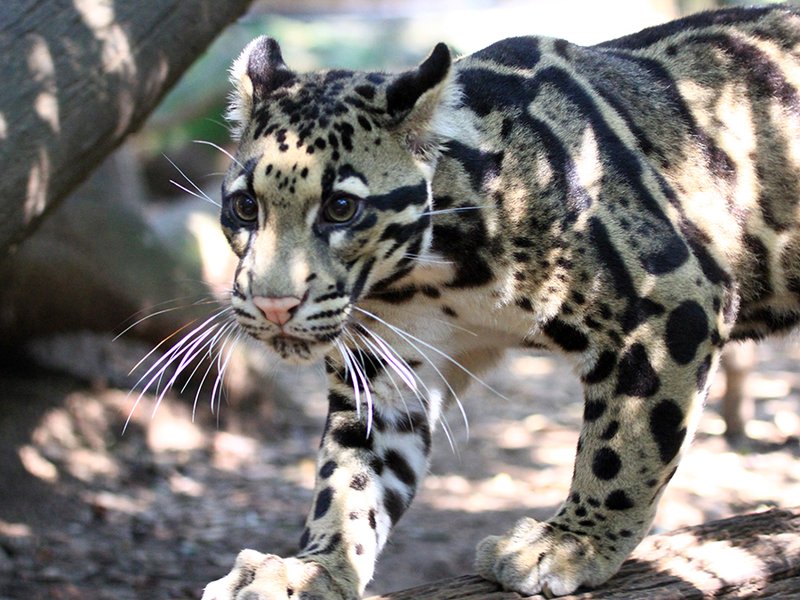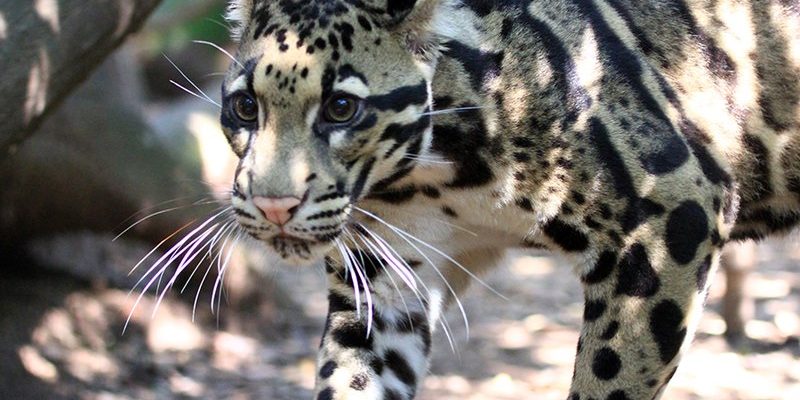
These remarkable creatures are masters of adaptation, expertly navigating the treetops of Southeast Asia’s forests. They hunt and thrive in this unique environment, connecting various elements of the ecosystem. Let’s dive deeper into understanding the clouded leopard’s role in its ecosystem and why it matters for the balance of nature.
The Clouded Leopard: An Overview
Before we explore their role, it helps to know a bit more about the clouded leopard itself. Belonging to the Felidae family, these cats are smaller than tigers but larger than domestic cats, weighing between 50 to 80 pounds. They’re known for their long tails, which help them balance as they move through the trees. Their beautiful, patterned coats not only help them blend into their surroundings but also make them one of the most visually striking animals in the world.
Clouded leopards are solitary creatures, often spending their time alone except during mating season or when raising cubs. They are nocturnal hunters, preferring the cover of darkness to stalk their prey. This means they play a significant role in controlling the populations of other species in their habitat, keeping everything in balance.
The Role of Predators in Ecosystems
You might be wondering, why does the clouded leopard matter? Well, every ecosystem needs predators to function effectively. These big cats help regulate the populations of herbivores and smaller carnivores. Consider this: if there are too many herbivores like deer or wild boars, they can overgraze vegetation, leading to habitat loss for many other species.
By hunting these animals, clouded leopards keep their numbers in check. This, in turn, promotes healthier plant life, allowing diverse flora to thrive. Healthy vegetation is crucial because it supports the entire ecosystem—from insects and birds to larger mammals. Essentially, the clouded leopard is like the conductor of an orchestra, ensuring that every part plays in harmony.
The Importance of Biodiversity
Biodiversity refers to the variety of life in a particular habitat or ecosystem. The clouded leopard contributes to this diversity in meaningful ways. As top predators, they help maintain balanced ecosystems, ensuring that no single species dominates the environment. Imagine a jigsaw puzzle where every piece holds significance; removing one piece can distort the entire picture.
When clouded leopards thrive, they signal a healthy ecosystem. Their presence indicates that various species coexist and that the habitat is resilient. On the flip side, if their population drops, it could suggest underlying issues, like habitat destruction or the influence of poaching. Maintaining a robust clouded leopard population is crucial for overall biodiversity, as it promotes healthy interactions among species.
The Clouded Leopard as a Keystone Species
Clouded leopards are often referred to as keystone species—those that have a disproportionately large effect on their environment compared to their population size. They influence other species’ behaviors and populations, acting as a vital part of their ecosystem.
When they hunt, clouded leopards also affect the behavior of prey animals. For instance, if they’re prevalent in an area, their presence may cause herbivores to alter their grazing patterns. This change can lead to new growth in certain areas, stimulating plant diversity and healthy ecosystems. It’s like a ripple effect; one small action can lead to significant changes across the landscape.
Despite their crucial role, clouded leopards face numerous threats that jeopardize their survival. Habitat loss is one of the most pressing issues. Deforestation, driven by logging and agricultural expansion, reduces the trees they rely on for hunting and shelter.
In addition, poaching poses a significant threat. These cats are often hunted for their beautiful pelts and bones. Unfortunately, as their populations decrease, the balance of their ecosystem starts to falter. You could think of it as a house of cards; if one card slips out, the whole structure can collapse.
Fortunately, many organizations are working hard to protect clouded leopards and their habitats. Conservation efforts include creating protected areas where they can roam and breed safely. Education programs raise awareness about the importance of these beautiful cats and encourage local communities to engage in conservation practices.
Research plays a crucial role as well. By studying clouded leopards, scientists can better understand their needs and how to protect them. It’s a team effort that requires collaboration from various stakeholders, including local communities, governments, and wildlife enthusiasts.
The future of clouded leopards depends significantly on our actions today. As we continue urban expansion and develop land for agriculture, we must ensure that we also prioritize conservation. Supporting local organizations that focus on wildlife protection, advocating for sustainable practices, and spreading awareness about the clouded leopard can make a tremendous difference.
Remember, the story of the clouded leopard isn’t just about one species; it’s about the interconnected web of life within the forest. When we protect one part of the ecosystem, we ultimately protect a larger environment that supports countless other life forms.
In conclusion, the clouded leopard is more than just a beautiful creature; it’s an essential player in maintaining the health and balance of its ecosystem. By understanding their role and supporting conservation efforts, we can help ensure that these magnificent cats continue to thrive in their natural habitats for generations to come.

